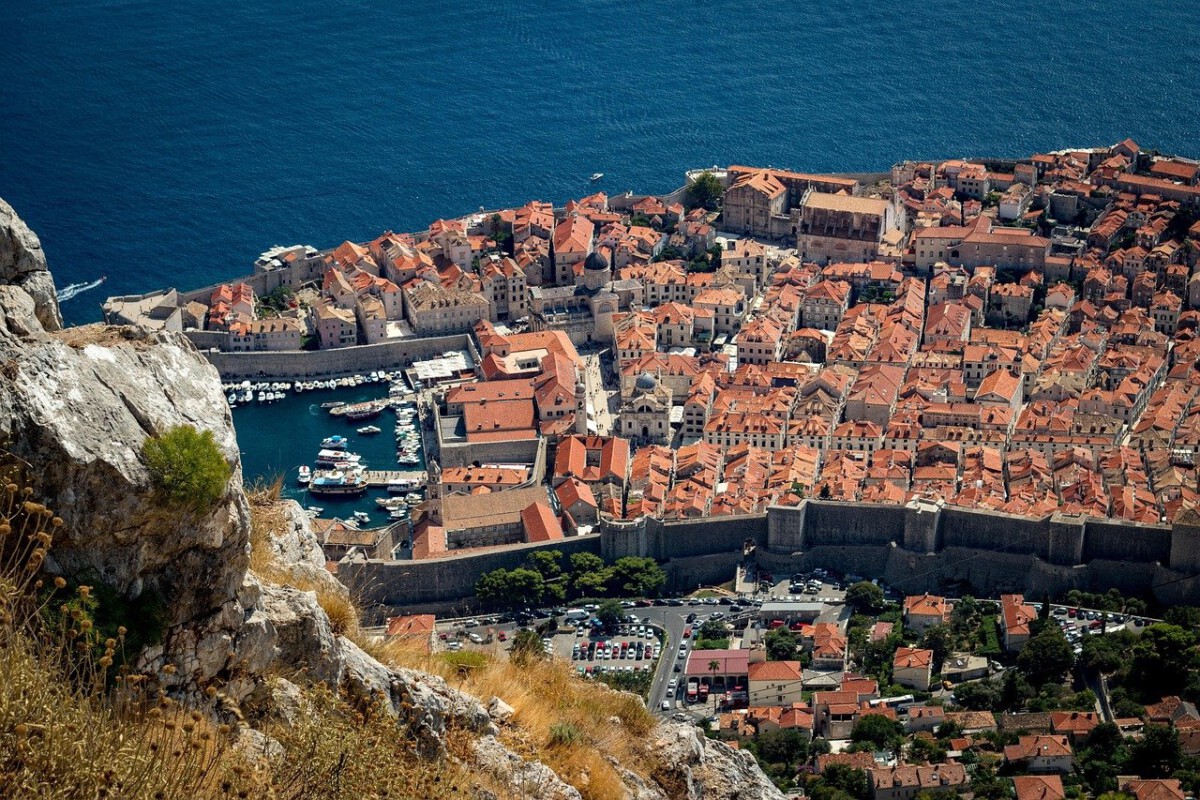The Population Paradox That’ll Blow Your Mind

Ever wonder why America’s biggest states often have surprisingly tiny capitals? Florida is one of the most highly populated states, but its capital, Tallahassee, has a population of just 193,000. Think that’s wild? New York City is the largest city in the US, but New York state capital Albany has fewer than 100,000 residents. This isn’t some weird coincidence – it’s actually a fascinating glimpse into how our country was built. These numbers tell stories of political compromise, geographic strategy, and sometimes just plain old stubbornness from lawmakers who didn’t want the biggest city calling all the shots. It’s like picking the middle child to be in charge instead of the oldest.
The Tiniest Titans Running Entire States

Some of the largest states also have some of the smallest state capitals, including Cheyenne, Wyoming (65,249), Helena, Montana (32,285), and Juneau, Alaska (32,198). Imagine running an entire state from a town smaller than most suburban shopping districts! Montpelier, Vermont, was the smallest capital by population, with 8,074 residents as of April 1, 2020. That’s fewer people than attend most high school football games. These numbers reflect the fact that, although these states are geographically large, they are much more remote and sparsely populated than many other areas of the United States. It’s mind-boggling to think that major policy decisions affecting millions of acres are made in places where everyone probably knows their neighbor’s dog by name.
Economic Powerhouses Hidden in Plain Sight

Often, they’re thriving cities with a lot of economic and cultural value. In fact, they can be some of the best places to live in America. State capitals aren’t just government office buildings and boring committee meetings. A state’s capital city is more than just the seat of its government – it’s also often the center of its economic activity. Some state capitals boast incredible job markets, high average salaries, world-class universities, and an abundance of attractions. Austin, Texas serves as a perfect example – it’s become a tech hub rivaling Silicon Valley while still maintaining its quirky “Keep Austin Weird” culture. These cities have learned to leverage their political importance into economic opportunity, creating jobs that go way beyond just working for the state.
The Surprising Stability in an Ever-Changing World

Interestingly, most of the state capital population numbers have stayed relatively stable when the 2010 and 2018 census data is compared. While America’s big cities boom and bust, state capitals maintain a steady heartbeat. Outside of the top ten, which all show fairly substantial population increases, quite a few state capitals show increases of only a few thousand. Little Rock, Arkansas went from 193,524 in 2010 to 199,233 in 2018, Lansing, Michigan rose from 109,563 to 113,348, and Olympia, Washington increased its population from 46,478 to 53,144. This stability comes from their unique mix of government jobs, universities, and local businesses that don’t follow the same volatile patterns as private industry. It’s like having a built-in insurance policy against economic rollercoasters.
Government Job Goldmines You Never Considered

State capitals are basically guaranteed job markets in a way that most cities can only dream about. Government employment provides recession-proof income streams that keep these communities afloat when private sector jobs disappear. Teachers, administrators, lawmakers, court officials, and thousands of support staff create a stable economic foundation that other cities struggle to maintain. Plus, most state capitals host major universities – think Austin with UT, or Madison with University of Wisconsin. These institutions bring in students, researchers, and federal grant money that transforms small towns into intellectual and cultural hubs. The combination of steady government paychecks and university energy creates communities that punch way above their weight class economically.
The Phoenix Phenomenon – When Capitals Actually Boom

Census counts in 2020 reveal Pheonix as the largest capital city in the States at more than 1.7 million, followed by Austin, Columbus, Indianapolis, and Denver to round out the top five most populated state capital in the U.S. The City of Pheonix has a population of 1,703,080 in 2020, a number that has spiked over the past decade as the Phoenix metro area (the Valley) saw a rise of more than 755,000 people since 2010, an average of more than 207 people per day. This makes the region the third-fastest growing area in the United States and estimates by the US Census Bureau indicate the city of Phoenix itself has the quickest rate of growth in the country. Phoenix proves that some state capitals can transform from sleepy government towns into major metropolitan powerhouses. The desert city leveraged its political status, favorable business climate, and year-round sunshine to attract tech companies, retirees, and families fleeing expensive coastal cities.
The Quality of Life Secret That Most People Miss

In order to determine which state capitals make the best homes, WalletHub compared all 50 across 48 key indicators of affordability, economic well-being, quality of life, education and health care. Our data set ranges from the cost of living to the quality of K–12 school systems to the crime rate. State capitals often offer the perfect sweet spot between big city amenities and small town livability. They typically have excellent schools (thanks to state education funding), low crime rates (government officials live there too!), and cultural attractions that rival much larger cities. Many capitals also benefit from being located in scenic areas – think Denver with its mountain views or Honolulu with its beaches. Annapolis, Maryland, is the smallest capital by land area, encompassing 6.73 square miles. It was also the seventh smallest by population, with 40,812 residents as of April 1, 2020. Yet this tiny waterfront city offers world-class sailing, historic charm, and proximity to both Washington D.C. and Baltimore.
The Inequality Paradox That’s Actually Shocking

However, not all state capitals are created equal. For example, nearly 27% of the population of Hartford, CT lives in poverty, compared to 11.1% of the entire United States. This stark reality shows that being a state capital doesn’t guarantee prosperity for everyone. Some capitals struggle with the same urban challenges as any other city – poverty, aging infrastructure, and economic decline. Some state capitals, including Charleston (West Virginia), Jefferson City (Missouri), and Montpelier (Vermont) – also the smallest state capital with around 7,500 residents – saw population decreases, possibly reflecting changing demographics and opportunities within these areas. The contrast between thriving capitals like Austin and struggling ones like Hartford reveals how location, state economics, and local leadership can create vastly different outcomes. It’s a reminder that political importance doesn’t automatically translate to economic success.
Historical Accidents That Shaped Modern America

States selected their capitals for a variety of reasons, including: the presence of a large population; a desire to drive settlement and economic growth to an area; historical significance, such as the first area settled; or perceived safety from historical military threats. Many of today’s “illogical” capital choices made perfect sense 150+ years ago. Tallahassee became Florida’s capital in 1824 as a compromise between the two existing power centers of Pensacola and St. Augustine – they literally picked the spot halfway between them. Albany beat out New York City partly because legislators wanted to avoid the “corrupting influence” of big city commerce and immigrants. Most states have not changed their capital city since becoming a state, but the capital cities of their respective preceding colonies, territories, kingdoms, and republics typically changed multiple times. These historical quirks created accidental advantages that still benefit these cities today, proving that sometimes random political compromises create lasting economic opportunities.
The University Connection That Changes Everything

Almost every major state capital either houses the state’s flagship university or sits next to one, and this isn’t coincidence. Universities bring young people, research dollars, cultural events, and economic diversity that transforms small government towns into vibrant communities. Madison, Wisconsin exemplifies this perfectly – the University of Wisconsin creates a college town atmosphere that makes the city feel much larger and more dynamic than its actual size. College students become young professionals, professors become community leaders, and research projects become startup companies. The constant influx of educated, ambitious people creates an energy that’s hard to replicate in pure government towns. Plus, universities provide jobs that complement government work – if one sector struggles, the other often stays strong.
The Geographic Strategy That Still Matters Today

State capitals were often placed in the geographic center of states to make them equally accessible to all citizens in the pre-automobile era. This central location strategy created unexpected benefits that matter more than ever in our connected world. These cities often sit at the intersection of major highways, making them natural logistics and distribution hubs. They’re usually within driving distance of multiple major metropolitan areas, giving businesses access to large markets without big city costs. The geographic centrality that made sense for 19th-century horseback travel now makes these cities perfect for 21st-century supply chains and remote work lifestyles. Workers can live in affordable capitals while serving clients in expensive coastal cities – the ultimate geographic arbitrage.
Cultural Scenes That Rival Major Cities

State capitals punch way above their weight when it comes to arts, music, and cultural offerings. Government funding, university partnerships, and educated populations create demand for sophisticated entertainment that you’d normally only find in much larger cities. Santa Fe, New Mexico has built an international reputation for art galleries and Native American culture. Nashville leveraged its state capital status into becoming the worldwide center of country music. Even smaller capitals like Montpelier host festivals, theaters, and cultural events that would be impossible without the stable economic foundation of government and education jobs. The concentration of educated, politically engaged residents creates audiences for cultural programming that many larger cities struggle to support. It’s like having a major city’s cultural scene compressed into a walkable, affordable package.
Being a state capital might seem like a bureaucratic accident of history, but these cities represent some of America’s best-kept secrets for quality living, economic opportunity, and cultural richness. Who knew that political compromise could create such interesting places to call home?





